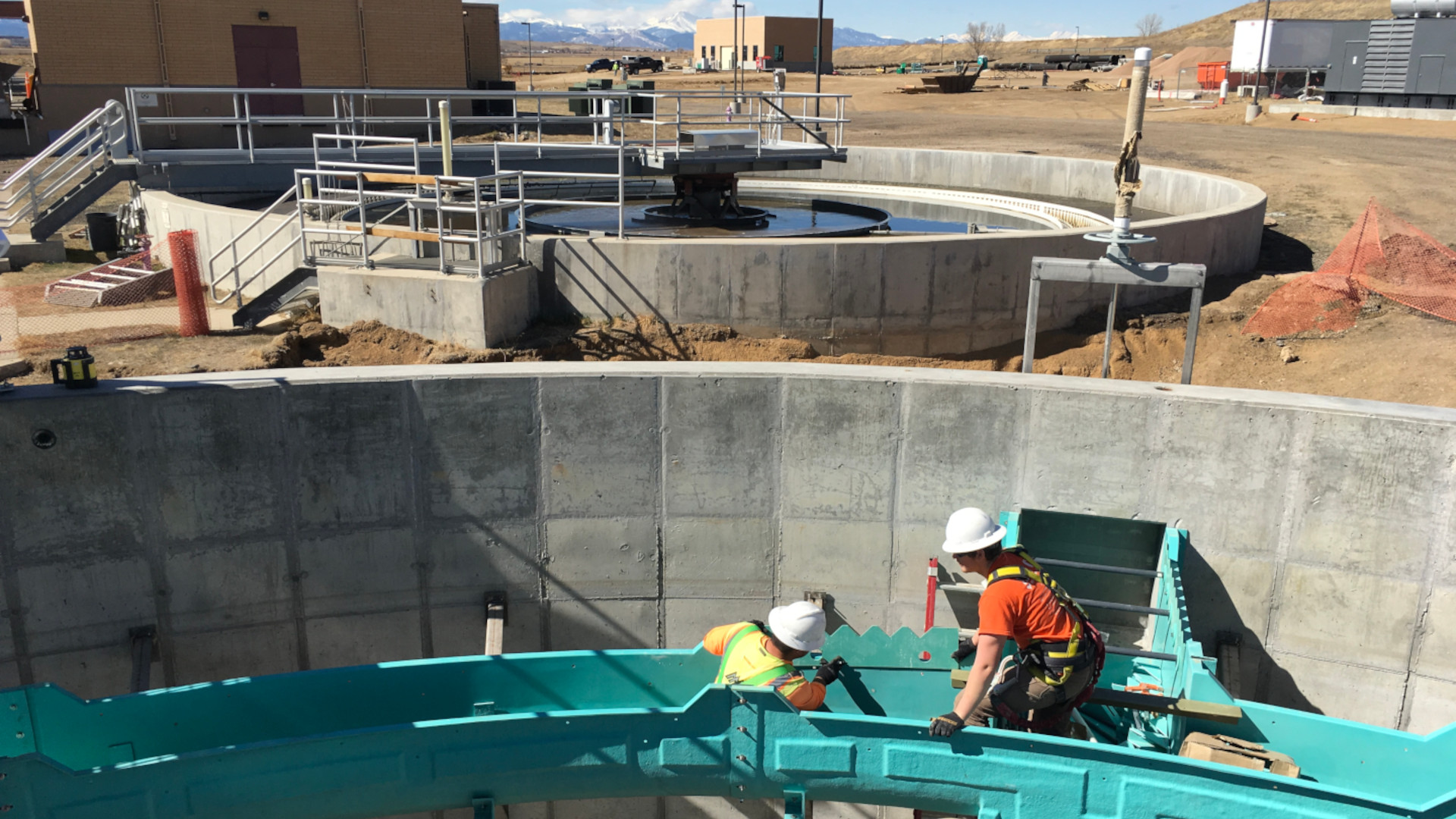Northglenn WWTP Headworks & Clarifier Project
Project Highlights
- 5 MGD WWTP
- $1.2M in Construction Savings
- Significant Odor Mitigation
Providence performed facility planning and design for the rehabilitation of a 5 MGD WWTP. Facilities include a new headworks building with odor control, aerations system improvements, a new final clarifier and the design of a new operations building for the plant.
The main purpose of the Northglenn Wastewater Headworks and Clarifier Project was to remove from service, and decommission, the primary lagoons. The lagoons, serving as primary clarifiers, had functioned as a debris trap which over time became a severe odor source to the nearby neighborhoods. Because of this, removing the lagoons from service required construction of a headworks facility to prevent inorganic debris and trash from accumulating in the activated sludge biological nutrient removal (ASBNR) process basins.
The project was completed by utilizing a CMAR construction contract which allowed the design and construction team to save the City $1.2M. Major project elements included the design and construction of a new headworks facility which included two automatic stair screens with screenings, washer/compactors and grit separation, dewatering equipment, a new influent splitter box located upstream of the three existing aeration basin cells, one new secondary clarifier matching the dimensions of the two existing clarifiers; a new Operations Building and laboratory and decommissioning of the existing two primary wastewater lagoons.
The Headworks Facility was designed to completely capture and treat odors emanating from the force main discharge at the plant. The project’s planning and design phases involved detailed hydraulic evaluations related to plant hydraulics and the reconfiguration of piping to allow for movement of flows to various locations and process trains. These improvements included extensive hydraulic control design with multiple slide gates and open channel design. Additional efforts included the selection of corrosion resistant coatings, equipment, and Hydrogen Sulfide odor control. The odor treatment system incorporated an innovative use of the air ionization process to capture and treat the odors from the force main air discharge. A third 65’ diameter secondary clarifier, aeration blower and back-up electric generator were installed to provide redundancy and operational flexibility in addition to replacing the lagoons with a new headworks facility. These improvements provided the City with a treatment facility that greatly reduced odors and has more flexibility for operation.
